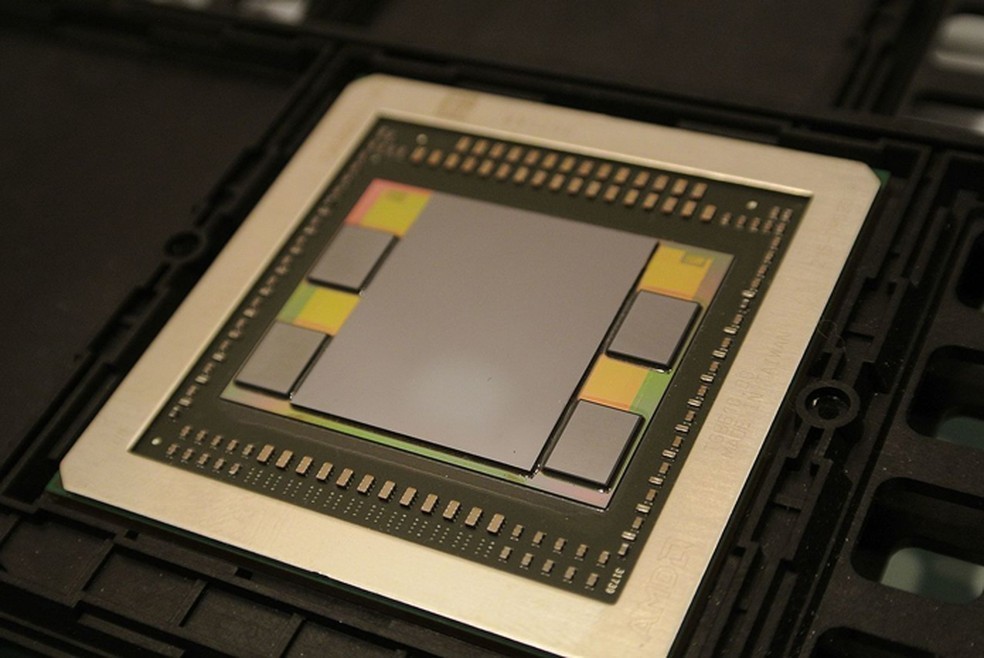Intel should launch its new line of Intel Xe video cards very soon. The products come to compete with AMD and Nvidia GPUs on PCs and notebooks, and the manufacturer’s first experience with the new architecture is already in the recently released Swift 5. According to Acer, the computer comes equipped with “the latest Intel chips”, bringing the new video solution – for now, still integrated.
Dedicated versions and technologies like Ray Tracing, for example, are expected to arrive by the end of the year. Check out below all about the arrival of the brand in the GPU market with Xe cards.
Specifications and Performance

The profile of Intel’s new boards remains a mystery, but rumors indicate that GPUs would be able to stand up to AMD and Nvidia products, vying for space primarily in the PC market for enthusiasts. In an interview with Digital Trends, Intel executive Raja Koduri, who has led AMD’s Radeon Graphics Group, said the boards can rely on HBM memory, not GDDR6, the standard in AMD and Nvidia components. This technology has positive performance effects but has been put aside by manufacturers because it represents high manufacturing costs.
To date, a division into three major groups is expected: the Xe HPC, high-performance options for data centers and supercomputers; the Xe HP, with a gamer profile, and aimed at home PCs; and the Xe LP, input models with low power consumption.
While the first line focuses on professional use, the “mid-range” group should rely on competing options from Nvidia’s GeForce and AMD’s Radeon. In any case, the Xe HP architecture can be used in professional versions of the boards, rivaling Nvidia Quadro and Radeon pro. Models of this standard should have up to 4,096 shader cores, relatively comparable to Nvidia CUDA cores or Radeon flow processors.
These units are related to graphics processing and performance, indicating an interesting option to GeForce RTX 2080, for example, which is among the fastest cards in the world today. The Xe LP group, focusing on input computers, would be in the same category of APUs from AMD, which bring Ryzen cores with the Radeon line integrated GPUs.
Anyway, it’s important to consider that there is little confirmed information about what Intel will deliver with Xe cards. The only benchmark leaked so far, for example, shows a GPU with 768 shader cores and raw computing performance in the 2.3 teraflops range, which is equivalent to Nvidia’s GeForce GTX 1050 Ti.
Integrated or Dedicated?
Both. According to rumors and leaks, Intel Xe uses technologies that the brand has been applying to video cards for over 20 years, and the idea is to serve all kinds of markets with these new products. The Acer Swift 5, announced at the end of June, is the first notebook in the world to feature a Xe GPU, a unit integrated with Intel’s “latest” processor.
Vehicles like The Verge, for example, also point out that the chip is an eleventh-generation component. Dedicated Xe line boards, therefore, are not expected to arrive until the end of 2020 or, more likely, 2021.
Does it run games? Is it good for productivity?

All the information leaked, such as release schedules, driver’s source code, or even internal slides about the next product cycles reinforces that the brand intends to achieve different types of use. Therefore, the consumer will probably find gamer versions of Intel Xe GPUs, capable of facing newer games without the same sacrifice of current UHD Graphics.
It is worth mentioning that, currently, some tenth-generation processors come equipped with the latest Iris Plus, solutions that handle games in low resolutions, and simpler video configurations.
The consumer should also find units capable of facing heavier activities, on the same level as Nvidia Quadro and Radeon Pro, from AMD. Thus, versions of Intel Xe are expected to work for video editing at higher resolutions, processing Artificial Intelligence routines, and tasks involving 3D modeling, among other examples.
A guaranteed aspect is the presence of Ray Tracing techniques via hardware. Lighting synthesis technology and its effects on computer graphics are already part of Nvidia’s products and debuts on AMD cards with Xbox Series X and PlayStation 5 consoles, both equipped with Radeon GPUs.
Can Intel go head-to-head with Nvidia and AMD?

It’s hard to predict how far Intel will be able to rival the two brands that dominate the GPU market. However, it must be recognized that the brand has been positioning itself well to face the challenge, after all, who has been leading the Xe development process for some years is Raja Koduri, ex-AMD. Therefore, everything indicates that the manufacturer intends to compete directly with Nvidia and AMD itself.
When will it arrive?
At first, Intel was expected to debut the line of graphics cards in June 2020. Nevertheless, possible product development problems seem to have postponed plans, and now rumors point to the launch at the end of 2020 or even later in 2021. What can be expected is the arrival of Intel Core chips with graphics solutions based on Xe architecture, as it happened in the new Acer Swift 5.
This post may contain affiliate links, which means that I may receive a commission if you make a purchase using these links. As an Amazon Associate, I earn from qualifying purchases.

